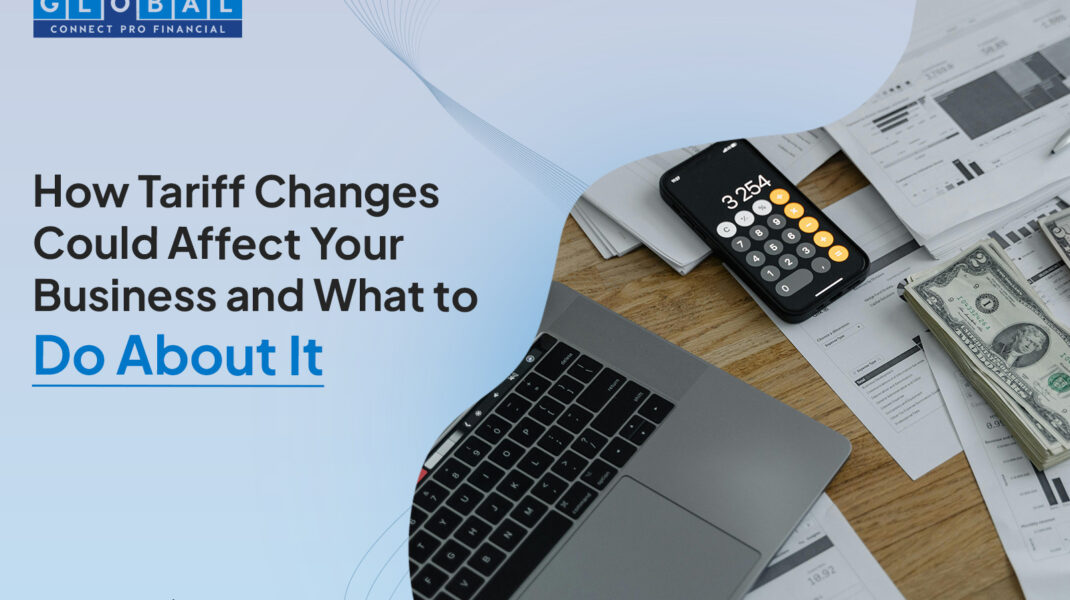How Tariff Changes Could Affect Your Business and What to Do About It

Tariffs – taxes placed on goods when they cross borders – may sound like something only governments worry about. But in reality, the tariff impact on business can affect almost every company, big or small. From higher costs to changes in customer demand, tariffs can have a direct effect on your profits and future growth.
And in 2025, tariff changes are happening fast. Let’s break it down simply and look at what’s new, how it could affect your business, and what you can do about it.
Why Tariff Changes Matter
When tariffs go up or down, here’s what usually happens:
- Costs increase – Imported raw materials, parts, or finished products become more expensive.
- Prices change – Businesses may need to raise prices to cover new costs.
- Profits shrink – If prices can’t go up, profit margins get smaller.
- Customer demand shifts – Higher prices often reduce sales, while lower tariffs may boost buying.
In short: tariffs can change how much you spend, how much you earn, and how customers see your products.
Latest Tariff Updates
Here are some important changes shaping global business this year:
- U.S. tariffs on Indian goods doubled – The U.S. recently raised some tariffs on Indian exports from 25% to 50%, which has already hurt Indian exporters. Even products not directly taxed, like smartphones, are seeing lower shipments.
- U.S.–India trade talks – Both countries are holding discussions on tariffs, visa rules for skilled workers, and access for farm and dairy products. Until resolved, uncertainty remains for businesses on both sides.
- EU–Indonesia trade deal – Europe signed a deal with Indonesia to cut tariffs on about 80% of goods, making palm oil, textiles, and other products cheaper to move.
- Mercosur trade agreement – South American countries (Brazil, Argentina, etc.) signed a new pact with European partners to lower tariffs and ease trade flows.
- U.S.–China tariff pause – After years of back-and-forth, both nations agreed to freeze further tariff hikes and even rolled back some existing ones, creating short-term relief for global businesses.
- Currency pressure – India’s rupee recently hit a record low, partly due to tariffs and visa policy issues, which makes imports more expensive and affects business costs.
- End of special trade programs – Some agreements like the U.S. duty-free scheme for African countries are expiring, leaving businesses uncertain about future costs, showing the real tariff impact on business.
Who Gets Affected the Most?
Some industries are more exposed to tariff shifts than others:
- Manufacturing – Higher tariffs on metals, machinery, or parts increase production costs.
- Retail & E-commerce – Imported goods become pricier, often forcing higher customer prices.
- Farming & Food – Export tariffs lower profits for farmers and food exporters.
- Technology – Tariffs on gadgets, chips, or software imports can push prices up and limit innovation.
What You Can Do to Protect Your Business
Instead of waiting for tariff changes to hurt you, here’s how you can stay prepared:
- Diversify your suppliers – Don’t rely only on one country or vendor. Look for local or tariff-free options.
- Review pricing – If costs rise, adjust prices carefully. Be open with customers about why prices are changing.
- Explore trade agreements – See if your business qualifies for benefits from regional trade pacts.
- Plan for surprises – Keep some buffer in your budget to handle sudden cost hikes.
- Watch currency trends – If your business imports or exports, keep an eye on exchange rates.
- Stay updated – Tariff rules can change overnight. Follow news, government announcements, and trade associations.
- Communicate clearly – Let customers know about changes early. Transparency builds trust and loyalty.
The Bottom Line
Tariff changes aren’t just a government issue – they’re a business issue. In 2025, we’re seeing:
- Higher U.S. tariffs on Indian goods.
- New trade deals in Europe and South America.
- A temporary truce between the U.S. and China.
- Currency and investment risks linked to global trade policies.
Businesses that adapt quickly to the tariff impact on business, diversify suppliers, plan smart, and keep customers informed will come out stronger. Those who wait and react late may face bigger costs and shrinking profits.
Now is the time to stay alert, flexible, and proactive – because tariffs may keep changing, but your ability to adapt can decide whether you grow or struggle.
Read More: 10 Scenarios Where You Can Get Business Loans Without Documentation
Read More: What Small Business Owners Should Know About Funding Circle’s Changes

